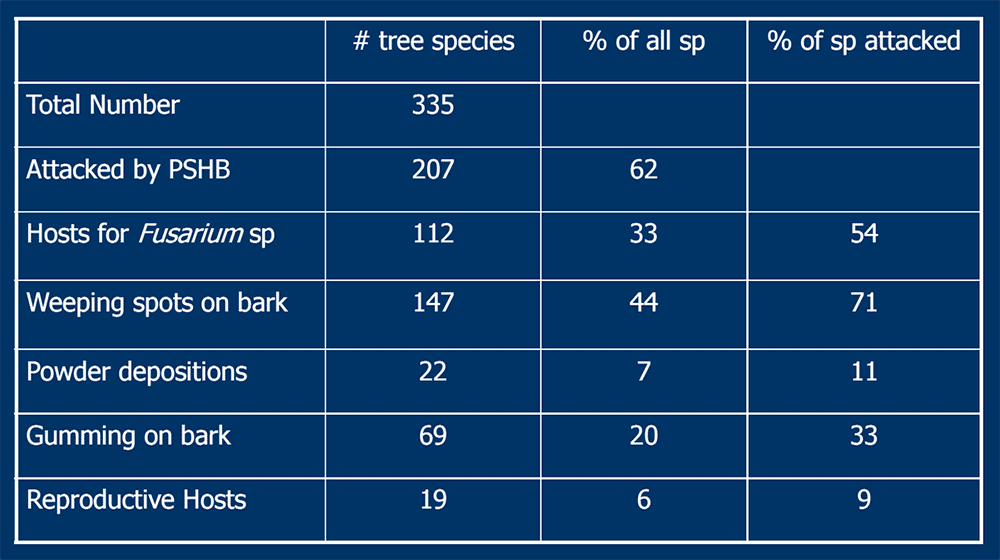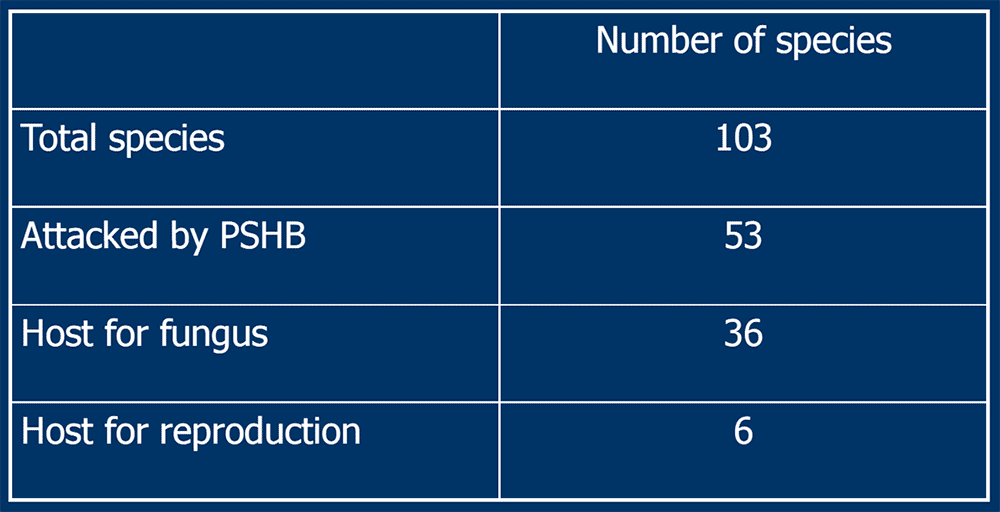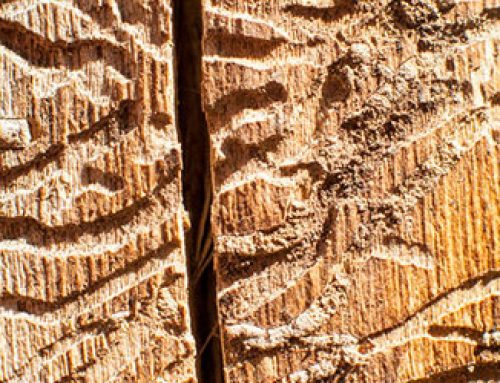The following article was written by Michael Eatough Jones & Tim Payne, Department of Entemology, UC Riverside, and John Kabashima, UC Cooperative Extension, Orange & LA Counties. The ambrosia beetle and fusarium complex represent a real threat to trees in Orange and Los Angeles County, especially in areas such as Beverly Hills, Belair, and Brentwood.
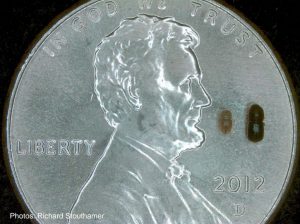 Euwallacea species
Euwallacea species
The vector beetle:
- The beetle is a new Euwallacea species relative of the tea shot hole borer (an exotic Asian ambrosia beetle).
- It is very small and difficult to see.
- The beetle holes penetrate approximately 0.4-1.57 inch into the wood and there are often many inch into the wood and there are often many entry/exit holes on an infested tree.
- Females are black colored and about 0 07 Females are black colored and about 0.07-0 1 inch 0.1 inch long.
- Males are brown colored and about 0.05 inch long.
- The entry hole on avocado is about 0.033 inch wide.
Mated female bores into tree, creates galleries
- Galleries are infected with symbiotic fungus
- Fungus grows on gallery walls and spreads through the tree
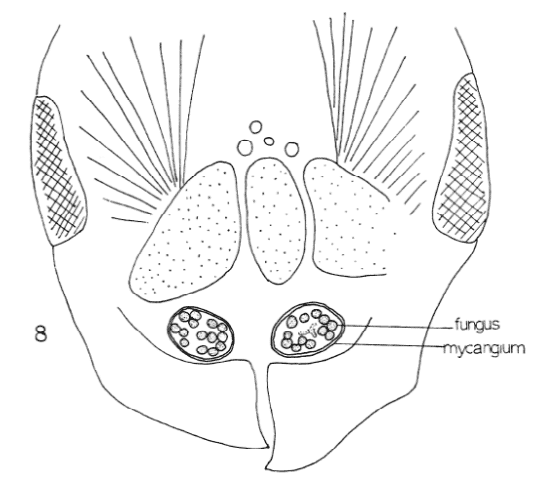
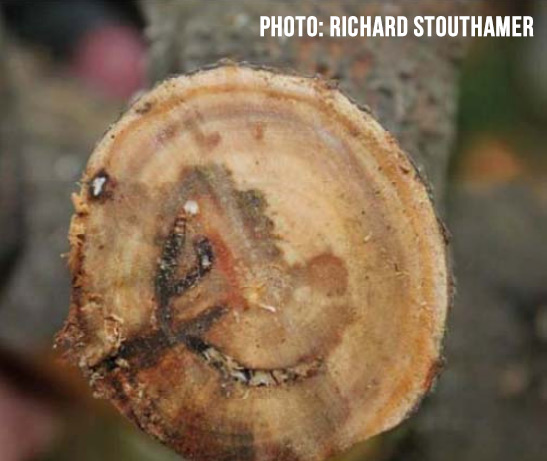
- Euwallacea species was first detected in CA in 2003 in Whittier Narrows.
- Caused death of large number of Box Elder street tree in Long Beach in 2010
- February 2012: Akif Eskalen found it on a backyard avocado in South Gate
- Widely spread in LA County and parts of Orange County
- Attacks many host tree species
Euwallacea fonicatus-like sp.
Where does the beetle come from?
- Probably Southeast Asia, possibly Africa
- Also an invasive species in Israel causing extensive damage to avocado
Beetle identity: Morphologically E. fornicatus
- Based on DNA evidence it is another species
- Suggested common name Polyphagous Shot Hole Borer
California and Israeli form of beetle identical and different from the tea infesting form from Sri Lanka (original collection site of E. fornicatus).
Beetle Life Cycle
Sex ratio offspring very female biased, brothers mate with sisters in galleries and mated females leave the galleries to create their own galleries for offspring production.
Lifestyle leaves very few ways to combat the beetle. Single mated female can initiate new population.
PSHB/Fusarium sp. complex in sample of tree species found in the botanical gardens found in heavily infested part of Los Angeles County.
From A. Eskalen, R. Stouthamer, S.C. Lynch, P. Rugman-Jones, M. Twizeyimana, A. Gonzalez, T. Thibault (submitted). Host Range of fusarium dieback and its ambrosia beetle (Coleoptera: Scolytinae) vector in southern California.
Number of tree species specimens susceptible to PSHB in the southern California urban forest
Estimations were made using a representative tree species list (City of Orange, 1999)
From A. Eskalen, R. Stouthamer, S.C. Lynch, P. Rugman-Jones, M. Twizeyimana, A. Gonzalez, T. Thibault (submitted). Host Range of fusarium dieback and its ambrosia beetle (Coleoptera: Scolytinae) vector in southern California.
 Trees that host fungus and support beetle reproduction
Trees that host fungus and support beetle reproduction
- Mild: branch dieback
- Severe: tree death
- Known hosts:
- Castor bean
- Box elder
- Cost live oak
- Avocado
- Sycamore
Known Reproductive Hosts (22)
- Box (styraciflua)
- Silk Tree (Albizia julibrissin)
- Coral Tree (Erythrina corallodendon)
- Titoki (Alectryon excelsus)
- Blue palo verde (Parkinsonia florida)
- Palo verde (Cercidium floridium)
- Tortuosa (Salix matsudana)
- Red Willow (Salix laevigata)
- Trident Maple (Acer buergerianum)
- Evergreen Maple (Acer paxii)
- Chinese Holly (Ilex cornuta)
- Brea (Cercidium sonorae)
- Black Bean (Castanospermum australe)
- Camelia (Camelia semiserrata)
 Trees that host fungus but not beetle reproduction
Trees that host fungus but not beetle reproduction
We do not know the final outcome of this interaction.
- Often leakage of xylem fluid noticed on truck and branches
- May cause dieback of branches
- Maybe tree will be OK
Castor Bean
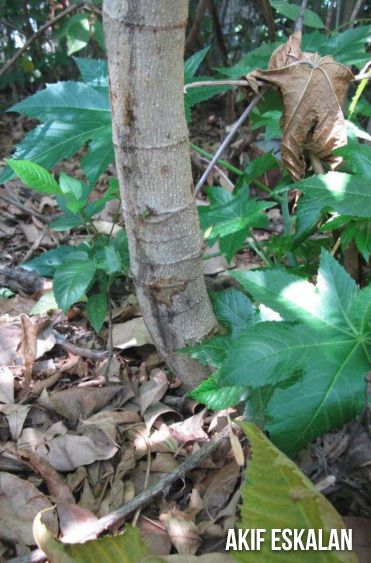
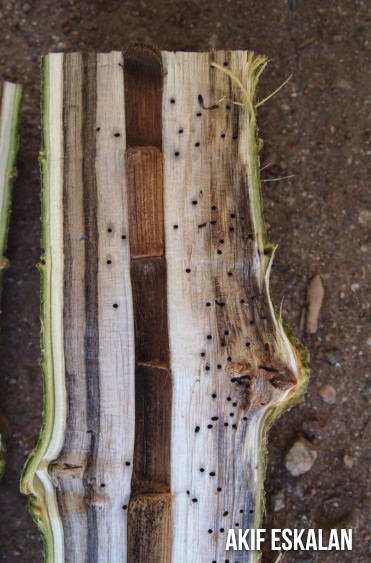
Coast Live Oak
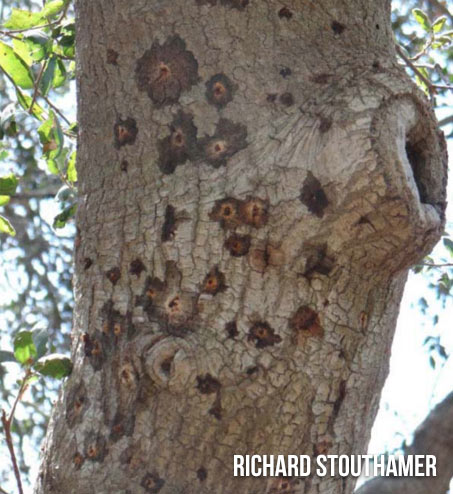
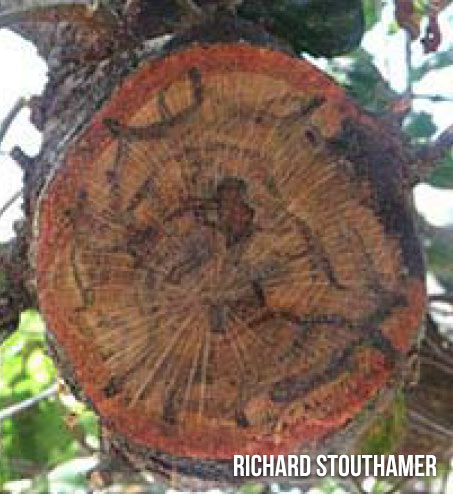
Box Elder


Avocado Tree


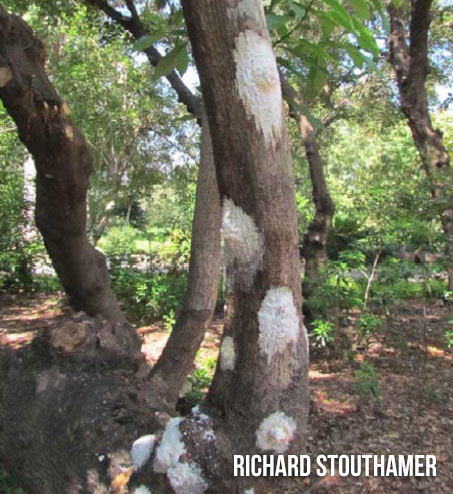
Ambrosia Beetles are Difficult to Control
- Generally only short time outside the tree
- Attract Sex pheromones No
- Aggregation pheromone No
What to do:
Certain plant species appear to be a preferred host for the beetle such as:
- box elder
- castor bean
- English oak
- sycamore
- liquid amber
- golden rain tree
- coast live oak
If such plants are present close to avocado groves, inspect them for evidence of the presence or damage by the beetles. The highest beetle exit/entry holes density is found at the base of the plant. If no beetle holes are present, it may be a good idea to remove the plants.
Look for a single entry/exit holes with surrounding white powdery exudate on avocado. The symptoms may be different on different hosts such as different levels of staining and/or gumming.

Scrape off the bark layer around the infected area to look for necrotic tissue.
Follow the gallery to look for the discolored necrosis caused by the fungus.
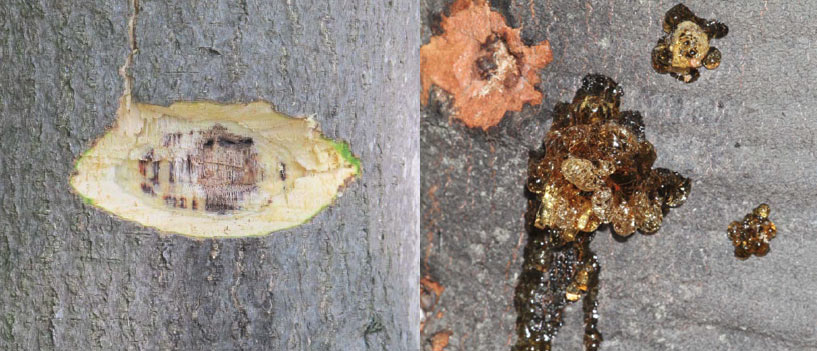
Cultural Control and Sanitation
- Tree removal
- Treatment of slash and debris
- Chipping or grinding
- Solarization and composting
- Firewood movement
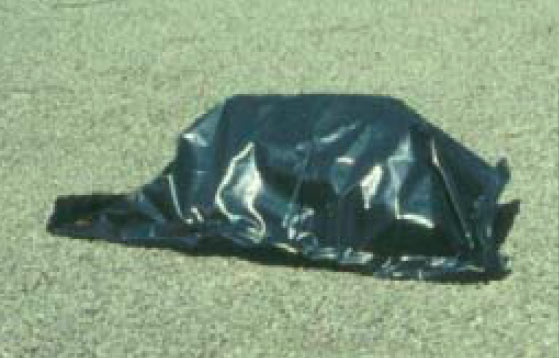
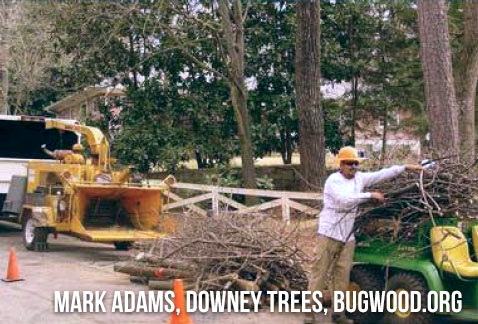
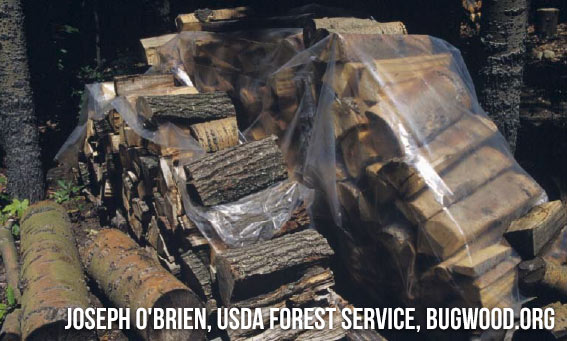
Chemical Control
- Insecticides and bark beetles – getting the material to the target
- Systemic insecticides – new materials and delivery, injections or drenches
- Contact insecticides – barrier sprays
- Value of trees and cost of treatments
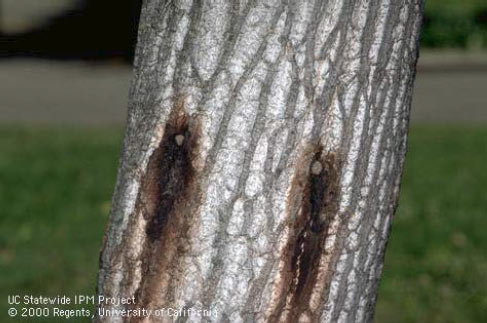
If you think your trees may be infected with the Ambrosia Beetle, don’t hesitate to contact us — it’s not only your trees at risk, but the entire region!




